Crafting Your Ideal Backyard: A Complete Guide
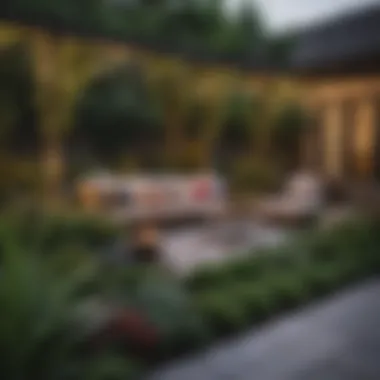
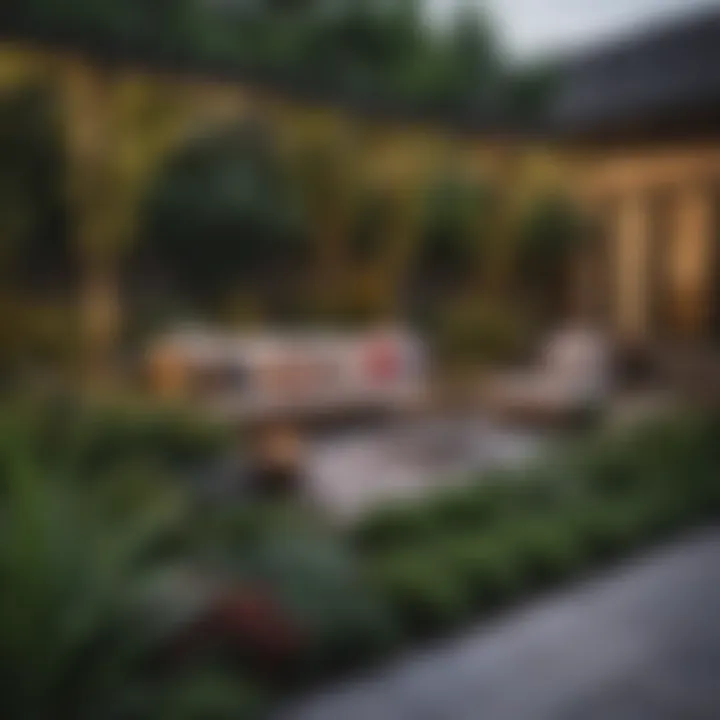
Intro
Creating an inviting and functional backyard is not just about aesthetics; it’s about creating a personal oasis that meets the needs of its users. Homeowners, interior design enthusiasts, party hosts, and gardening aficionados all seek spaces that enhance their outdoor living experience. However, achieving the perfect balance between beauty, functionality, and sustainability requires a thoughtful approach to design and planning.
A well-designed backyard can serve multiple purposes. It can be a retreat for solitary reflection, a gathering place for family and friends, and a sustainable environment supporting local wildlife. This guide will explore the essential components of backyard creation, from effective layout planning and material selection to innovative plant choices and outdoor structures. Each aspect aims to inspire readers to transform their outdoor space according to their distinct vision.
Design Inspiration
Current Interior Design Trends
The influence of interior design trends on outdoor spaces cannot be underestimated. Currently, minimalism is making waves across various design fields. In the backyard context, this translates to uncomplicated layouts with clean lines. The aim is to create an uncluttered environment that emphasizes simplicity and tranquility. For instance, opting for sleek furniture and understated decor can help maintain a serene aesthetic.
Moreover, biophilic design is becoming increasingly popular. It promotes a natural connection between indoor and outdoor environments. This trend encourages the use of organic materials, such as wood and stone, alongside the integration of native plants. Using these elements evokes a sense of harmony with nature.
Color Palettes and Their Effects
The choice of colors significantly affects the psychology of outdoor environments. Soft, muted tones like sage green, sky blue, and earthy browns create a calming atmosphere. These colors blend seamlessly with natural surroundings and enhance the overall appeal of the space.
For those seeking a more vibrant setting, bold colors can make a statement. Bright yellows, rich reds, and deep blues add energy and enthusiasm. However, it is essential to use these shades sparingly to prevent overwhelming the senses.
When planning a color palette, consider natural elements such as flowers and foliage, as they will influence the overall appearance. One effective strategy is creating a cohesive visual flow between the interior and exterior of the home.
"The outdoor space mirrors the interior style, creating continuity which enhances the user's experience."
Entertaining Ideas
Themed Party Concepts
An essential aspect of a well-designed backyard lies in its ability to host gatherings. Themed parties offer a creative way to engage guests. Popular themes include tropical luau, rustic barn, or even outdoor movie night. Each concept requires specific elements such as decor, lighting, and seating arrangements.
A tropical luau, for instance, might incorporate vibrant decorations, tiki torches, and exotic food options. In contrast, a rustic barn theme could use wooden accents, hay bales for seating, and seasonal fruits as centerpieces. Tailoring the theme to suit your venue and audience is key.
Menu Planning and Recipes
An inviting space naturally leads to culinary opportunities. When planning a menu for an outdoor gathering, consider the season and local produce availability. Grilling is always a popular choice, whether it's burgers or vegetable skewers. It allows for a casual atmosphere and can cater to various dietary preferences.
Incorporate refreshing drinks and unique appetizers. A salad bar with locally-sourced ingredients can give guests the option to customize their meal. Not only does a well-planned menu enhance the experience, but it also keeps the gathering enjoyable and memorable.
By understanding these various elements, homeowners can delve into the process of transforming their backyards into sophisticated and functional outdoor environments.
Understanding the Concept of a Perfect Backyard
Creating a perfect backyard goes beyond just functionality; it's about crafting a personal oasis. This space should reflect your lifestyle and serve as a sanctuary. Understanding the concept of a perfect backyard lays the foundation for a space that is both enjoyable and practical.
An ideal backyard should harmonize with its surroundings, featuring elements that support relaxation, entertainment, and possibly, gardening. It is essential to consider how various components interact. For instance, a well-placed seating area encourages conversation, while strategically placed plants can enhance the ambiance.
Assessing your needs is a starting point. Think about how you want to use the space. Do you have children or pets? Do you often entertain guests or prefer quiet time outdoors? These considerations define your unique ideal.
Moreover, the concept of a perfect backyard prioritizes sustainability. Friends of nature might focus on preserving local ecology by choosing native plants or utilizing rainwater harvesting systems. This aspect not only contributes to environmental sustainability but also offers personal fulfillment in knowing your backyard is contributing positively to the ecosystem.
"A backyard is not just a piece of land; it is an extension of your home and a reflection of who you are."
Defining the Ideal Space
Defining what your perfect backyard looks like involves both practicality and creativity. Start by visualizing the core functions that the space will serve. Think about the areas needed for gardening, recreation, or relaxation. Additionally, consider hardscape elements like walkways and patios as essential parts of the design.
The layout should be intuitive. For example, a dedicated play area for children may be best positioned away from potentially hazardous plants or features. Conversely, a patio for adult gatherings might benefit from a close-adjacency to a grill or outdoor kitchen appliance. This layout fosters a natural flow, making it easier to transition from one area to the other.
For many, an outdoor design also includes personal touches, like artwork or colorful furniture that reflects one's taste. It’s advisable to strike a balance between what feels right aesthetically while ensuring the space remains functional.
Importance of Personalization
Personalization is crucial in transforming a backyard from a mere plot of land into a living retreat unique to you. Your preferences, lifestyle choices, and hobbies should guide the design decisions. If you enjoy gardening, for instance, incorporating raised garden beds can allow for both cultivation and beauty.
Every backyard tells a story. Elements such as water features, fire pits, or cozy seating arrangements create an emotional connection with the space. Colors, textures, and layouts should evoke feelings that resonate with you. This consideration goes beyond mere decoration; it involves curating an experience that you and your guests will love.
Moreover, personalization enhances the home’s overall appeal. Properties with well-designed outdoor spaces can increase market value. If you plan to sell your home, an aesthetically pleasing backyard becomes a selling point, drawing potential buyers.
In summary, understanding what constitutes a perfect backyard integrates functionality with individual style, ensuring that each square foot serves a purpose and reflects its owner.
Analyzing Your Outdoor Space
Understanding your outdoor space is critical in the journey to create the perfect backyard. This section addresses the importance of evaluating your available area, considering sunlight and shade, and assessing soil quality. Each of these elements will greatly influence your design choices and the overall success of your backyard haven.
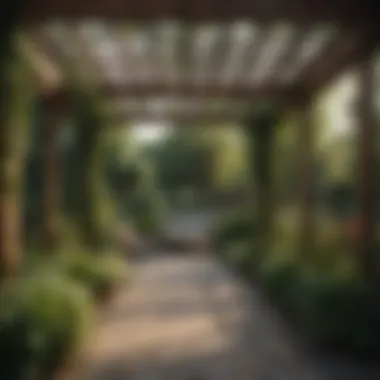
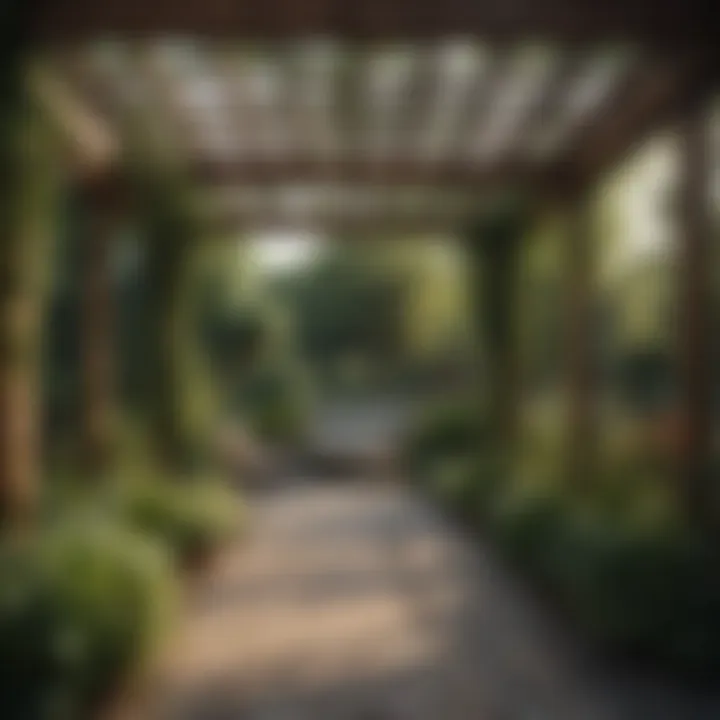
Assessing Available Area
Before making any plans, a thorough assessment of your available area is essential. This involves measuring the dimensions of your yard and noting the existing features, such as trees, walkways, and existing structures. Knowing the exact size helps prevent overloading the space with too many elements, leading to a cluttered environment.
After measurements are taken, consider how you envision using your backyard. Are you looking for a space to entertain guests, a serene garden for relaxation, or possibly a recreational area? Each of these purposes demands different arrangements of space. For instance, a patio might be more needed in an entertainment zone, whereas a garden area may require open space for planting.
Considerations for Sunlight and Shade
The amount of sunlight and shade your backyard receives is another foundational aspect of its analysis. Observing the patterns of sunlight throughout the day will influence where you position certain elements. Some plants thrive in full sun, while others prefer partial shade.
It is important to note the location of trees, fences, or buildings that could cast shade. Understanding these elements will allow you to make informed decisions about planting and the placement of features like seating areas. For example, positioning a seating area in a shaded spot can provide relief on hot days, making it more enjoyable for outdoor activities.
Evaluating Soil Quality
The quality of the soil in your backyard plays a crucial role in plant growth and overall garden health. It's not just about having soil; it must be suitable for the type of plants you wish to cultivate. You can perform simple tests to determine soil texture, drainage, and nutrient content.
A soil test kit can provide information about pH levels and nutrient deficiencies, which can guide your planting choices. If the soil quality is poor, you can amend it with organic matter or fertilizers as needed prior to planting. This step ensures that your backyard can support the lively and flourishing plants that will enhance your outdoor space.
"A well-prepared soil foundation is a decisive factor in the triumph of your backyard gardening efforts."
In summary, analyzing your outdoor space provides the blueprint for all subsequent design choices. Knowing the size, understanding sunlight patterns, and evaluating soil quality allows for a tailored approach to your backyard planning. Each of these areas has its own set of considerations that can impact the final look and function of your outdoor environment.
Now that you have a clearer understanding of your outdoor space, you're better equipped to make informed decisions that align with your vision for the perfect backyard.
Design Principles for a Cohesive Backyard
Designing a backyard requires attention to detail to achieve a harmonious space. This section examines essential principles that ensure visuals and functionality work together seamlessly. A coherent backyard can enhance the outdoor experience, making it more enjoyable for family and guests alike. Understanding these design principles fosters an environment that engages all senses while providing areas for relaxation and activity.
Establishing Flow and Focal Points
Creating a flow in backyard design is vital. Flow refers to how spaces connect and guide movement throughout the area. When planning your yard, think about pathways and circulation. Natural pathways can be created through plants, decorative stones, or mulch. Using curves rather than straight lines often can contribute to a smoother visual transition.
Focal points are key to drawing attention and establishing interest within the space. They can be anything from a beautiful tree, a water feature, or an art installation. Focal points pull the eye and help create a sense of purpose in specific areas of the yard. Positioning these points strategically can maximize their impact and integrate them into the overall design, enhancing both aesthetics and functionality.
"A well-designed space not only looks beautiful but also encourages interaction and enjoyment."
When thinking about flow and focal points, consider viewing angles from various spots within the yard. Focal points should be visible from multiple angles, enhancing the experience as one moves through the space. Attention to detail here is essential in achieving a cohesive look.
Incorporating Different Zones
Different zones in a backyard can cater to various activities, enhancing both leisure and functionality. It’s essential to define the space into practical areas such as relaxation zones, dining areas, and gardening spots. Using landscaping elements such as plants or hardscaping can effectively delineate these zones without physical barriers.
- Relaxation Zones: Create cozy areas with comfortable seating. Good design encourages people to spend time outside. Using outdoor rugs, cushions, and shade structures can make these zones inviting.
- Dining Areas: Establish a space for meals, equipped with tables and chairs. Consider proximity to the kitchen for convenience. Cover it with a pergola or umbrella for sun protection, promoting outdoor dining throughout the season.
- Gardening Areas: Designate sections for flowers, vegetables, or herbs. Having dedicated gardening space not only adds beauty but also cultivates a connection to nature. Using raised beds can improve accessibility and organization.
By carefully planning these zones, homeowners can enjoy diverse experiences within the same outdoor space. Balancing these areas encourages a multifunctional yard, leading to greater fulfillment in personal outdoor usage. Cohesion in design can yield a backyard that feels complete, serving both aesthetic and practical purposes.
Selecting Materials and Finishes
Choosing the right materials and finishes is critical in the process of creating a cohesive backyard. This choice influences not just the aesthetic appeal but also the durability and sustainability of the space. Every aspect, from your patio surface to fencing, impacts both functionality and the pleasure derived from your outdoor environment. When planning, factor in material longevity, maintenance needs, and how these elements align with your overall design vision. This ensures that your investment not only looks good but also stands the test of time.
Choosing Sustainable Options
Selecting sustainable materials is paramount in today's ecological context. Sustainable choices help reduce environmental impact and often contribute to a healthier outdoor space. Here are several key options to consider:
- Recycled Materials: Using products made from recycled content minimizes waste and often requires less energy to produce.
- Natural Stone: Materials like slate or granite are durable and can blend seamlessly into many natural landscapes. They do not require intensive processing or harmful chemicals for maintenance.
- Bamboo and Cork: These renewable resources provide great alternatives for decking and flooring, being fast-growing and highly sustainable.
Incorporating these materials can also resonate with homeowners looking to promote environmental responsibility.
Aligning Materials with Design Aesthetics
Aligning your selected materials with the overall design aesthetic of your backyard is essential for creating a harmonious space. Consider the following factors:
- Color Palette: Ensure that your materials complement your chosen color scheme. Neutral tones often create a calming effect, while bold colors can make a statement.
- Texture and Finish: The choice between smooth or rough surfaces can impact the tactile experience of your space. For instance, a rough stone patio can evoke a rustic feel, while polished concrete can create a modern atmosphere.
- Architectural Style: Materials should reflect the style of your home and surrounding area. For example, a modern home may benefit from sleek metals or glass, while a traditional space could favor brick or wood.
Choosing materials that reflect your personal aesthetic preference not only enhances visual appeal but also fosters a sense of connection to the backyard.
When selecting materials for your backyard, consider both environmental impact and design cohesion to create a space that is both appealing and sustainable.
Incorporating Functional Structures
Incorporating functional structures in your backyard is essential for maximizing usability and enhancing the overall experience. These elements not only serve practical purposes but also define the atmosphere and aesthetic of the space. When considering functional structures, think about how they will support your lifestyle and activities. This includes everything from relaxation and dining to cooking and entertaining.
Patios and Decks
Patios and decks act as the foundation for outdoor living spaces. They create a designated area to arrange furniture, which encourages social gatherings or peaceful retreats. When designing a patio or deck, consider the material choices carefully. Options like concrete, stone, or wood each offer unique aesthetic and utilitarian qualities.
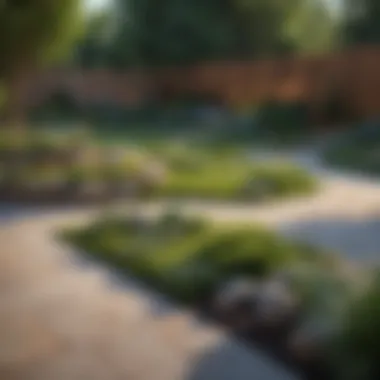
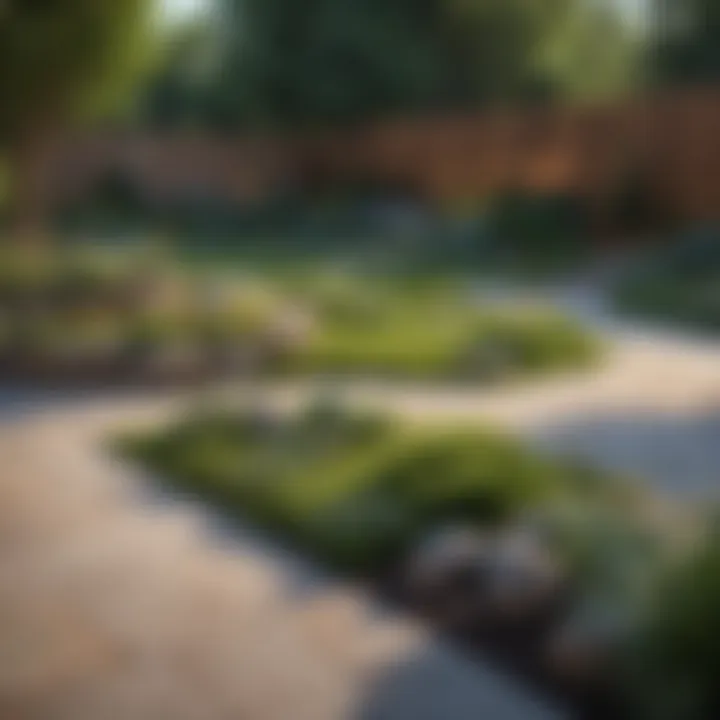
Patios provide a ground-level interaction with the garden, while decks, being elevated, may offer better views and an airy feel. The layout should also cater to how the area connects with the rest of the yard, promoting flow and accessibility. Here are some considerations for creating effective patios and decks:
- Size and Shape: Make sure it is proportional to your space; too large can overwhelm the area.
- Location: Place it to maximize sunlight exposure while avoiding harsh winds.
- Furniture: Select durable and water-resistant materials to withstand outdoor conditions.
Shade Structures and Pergolas
Shade structures, including pergolas, offer relief from the harsh sun while providing a cozy atmosphere. They are not purely functional; their design can also play a key role in the aesthetics of your backyard. When building a pergola, consider connection points to existing structures like homes or fences. This adds continuity to the environment.
Different types of materials can be used for shade structures:
- Wood: Classic and warm but may require regular treatment against termites and rot.
- Metal: Durable and modern, often requiring less maintenance.
- Fabric: Provides flexibility with options for shading and color but can weather more quickly.
Integrating climbing plants on these structures enhances the beauty and provides additional shade over time.
Outdoor Kitchens and Dining Areas
Outdoor kitchens and dining areas extend living space beyond the interior of the home. This addition cultivates a connection with nature while allowing for the enjoyment of meals outdoors. These structures encourage entertaining and socializing. Key elements for an effective outdoor kitchen area include:
- Grills and Cooktops: Choose sizes that correspond with the number of expected users.
- Counterspace: Allow for food prep and serving, making it practical and user-friendly.
- Storage: Incorporate weather-resistant cabinets to store utensils and cooking supplies.
For dining areas, consider the arrangement. Tables should fit both casual lunches and larger gatherings. It is wise to choose weather-resistant materials for furniture to ensure longevity in the outdoor setting.
Incorporating functional structures not only enhances usability but also reflects your personal design preferences. By carefully integrating these elements, you are poised to create a versatile and inviting backyard that meets various needs.
Integrating these functional structures requires consideration of how they relate to each other and the rest of the backyard. The balance between functionality and aesthetics will shape a backyard that is enjoyable year-round.
Selecting Plants and Landscaping
Selecting the right plants and landscaping features is critical when creating the perfect backyard. Plants serve not only to beautify the space but also to enhance its functionality and ecological balance. Properly selected plants can provide shade, attract wildlife, and contribute to the overall microclimate of the area. Additionally, thoughtful landscaping can create engaging spaces for relaxation and recreation. Homeowners should consider several elements when selecting plants and designing the layout to achieve harmony and sustainability in their backyard.
Choosing Native and Drought-Resistant Plants
Opting for native and drought-resistant plants offers numerous advantages for enhancing a backyard. Native plants are adapted to local climate conditions and soil type, making them generally easier to grow and maintain. They require less water and are more resilient to pests, thus reducing the need for chemical controls. Furthermore, these plants provide habitat and food sources for local wildlife, supporting biodiversity.
Drought-resistant plants, such as succulents and certain grasses, can further minimize water usage in landscaping. They typically have deep root systems that allow them to access moisture stored in the soil. By incorporating these plants, homeowners reduce their environmental impact while also lowering their gardening costs over time.
When selecting plants, consider the following:
- Soil compatibility: Ensure that the chosen plants thrive in your specific soil type.
- Light requirements: Check whether plants can survive in the available sunlight or shade.
- Growth habits: Account for mature size and spacing to avoid overcrowding.
Creating Visual Layers with Height and Texture
Creating visual layers in your backyard is essential for achieving depth and interest in the landscaping. Incorporating different heights and textures plants not only enhances the aesthetic appeal but also provides practical benefits. Layering plants helps to define spaces and offers a varied visual experience throughout the year.
- Tall plants should be placed at the back or center of beds to provide a backdrop. For example, sunflowers or hollyhocks can add a dramatic visual element.
- Medium-height plants can be used in the middle. Options like lavender or coneflowers offer color and texture to the scene.
- Short plants such as ground covers and low-growing perennials can fill the foreground, creating a full and lush appearance.
Texture acts as an important design element. By combining leaves of various shapes and surface types, you can create a more dynamic landscape. Smooth, glossy leaves juxtaposed with fuzzy or serrated foliage can stimulate the eye and keep the viewer engaged. Additionally, using hardscape materials such as stones or gravel can enhance the perception of depth and contrast against the greenery.
Lastly, consider the seasonal variations in plants. Choose those that bloom at different times to ensure ongoing interest and color changes throughout the year.
"Using a mix of native, drought-resistant plants not only saves resources but also respects the local ecosystem."
Enhancing the Backyard Atmosphere
Enhancing the atmosphere of your backyard is not just about beauty. It plays a critical role in making the space functional and welcoming for various activities. Creating an inviting atmosphere can transform your outdoor area into a refuge that balances leisure and recreation. This section will explore lighting considerations and the incorporation of water features, key elements that refine the overall mood and utility of your backyard.
Lighting Considerations
Lighting is essential for enhancing the backyard ambiance. Its importance extends beyond mere aesthetics to include safety and functionality. Well-placed lights can illuminate pathways, highlight features, and create a warm environment for gatherings after sunset. Understanding the types of lighting available helps in making informed choices.
- Types of Outdoor Lighting: There are several lighting options to consider:
- Strategic Placement: The arrangement of lights matters significantly. Consider a layered approach:
- Energy-Efficient Choices: Incorporating solar-powered lights can reduce energy consumption. These lights charge during the day and provide illumination at night without increasing electricity costs.
- Mood Setting: The color temp of the lights can affect the vibe. Warmer tones are usually more inviting for gatherings, while brighter, cooler tones may suit functional areas.
- String Lights: Ideal for creating a cozy, inviting feel. They can drape over patios or along railings.
- Spotlights: Useful for highlighting specific landscape features, such as trees or sculptures.
- Pathway Lights: Provide safety and navigation, marking walkways effectively.
- Use ambient lighting for overall illumination.
- Implement task lighting for areas where activities take place, like outdoor kitchens.
- Accent lighting can be used to showcase unique aspects of your backyard.
Incorporating Water Features
Water features are another effective way to enhance the atmosphere. They introduce a sense of tranquility and can be a central element in backyard design. The sound of flowing water can mask undesirable noises from the surroundings, creating a peaceful retreat.
- Types of Water Features: Consider the following options as they can cater to different aesthetic needs:
- Fountains: Available in various sizes, they can serve as focal points.
- Ponds: Can be designed for aesthetics while supporting local wildlife.
- Waterfalls: Create a dynamic focal point and add soothing sounds.
“Water features can redefine your outdoor experience by providing both visual appeal and sensory enjoyment.”
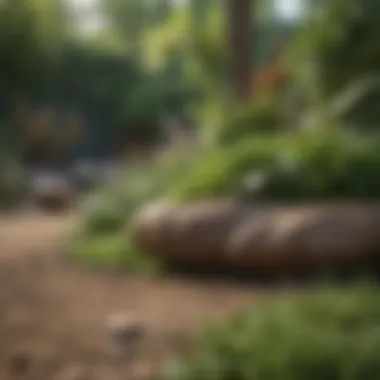
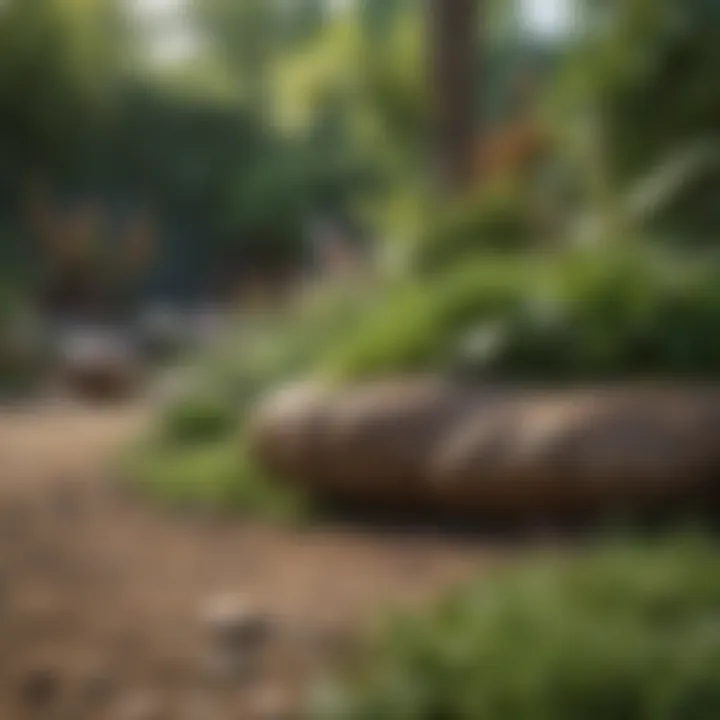
- Maintenance: It is crucial to think about the care involved. Features need regular cleaning and may require pump maintenance to function optimally. Incorporating native plants around water features can enhance ecological balance and minimize upkeep.
- Positioning: Place water features to maximize visibility and auditory experience from seating areas. Consider integrating them with landscaping to create a seamless connection within the outdoor space.
Sustainability Practices in Backyard Design
Sustainability in backyard design emphasizes the importance of creating outdoor spaces that are not only visually appealing but also environmentally responsible. As homeowners increasingly acknowledge their role in contributing to ecological well-being, integrating sustainable practices into backyard design becomes vital. These practices not only minimize negative environmental impact but also create healthy ecosystems right outside one’s home. They enhance not only the beauty of the space but also its functionality, resulting in a more enjoyable outdoor experience.
Rainwater Harvesting and Irrigation
Rainwater harvesting is a proven method for maximizing the natural resources available to your backyard. This practice involves collecting rainwater from roofs, pavements, or other surfaces and storing it for later use. Utilizing this natural water source can reduce reliance on municipal water supplies, thus lowering water bills and conserving valuable water resources.
Benefits of rainwater harvesting include:
- Cost-Effective: Using stored rainwater for irrigation and other outdoor uses can save money in the long run.
- Reduces Runoff: Capturing and utilizing rainwater diminishes the amount of stormwater runoff, helping to prevent flooding and soil erosion.
- Improves Groundwater Recharge: When less rainwater runs off immediately, more has a chance to seep into the ground, improving local groundwater supplies.
When setting up a rainwater collection system, consider:
- Storage Tanks: Ensure you have adequate and appropriate-sized containers for your specific needs.
- Filter Systems: Installing filters can keep out debris, ensuring that the water collected is clean.
- Diverse Use Cases: Use the harvested rainwater for irrigation, flushing toilets, and even washing vehicles, depending on local regulations.
Composting and Waste Management
Composting is a crucial aspect of sustainable backyard design. By composting organic waste—from kitchen scraps to yard trimmings—homeowners can significantly reduce the amount of waste sent to landfills. Instead of throwing away these materials, composting transforms them into valuable nutrients that enrich the soil.
The benefits of composting include:
- Soil Enrichment: Compost provides essential nutrients to plants and improves soil structure, leading to healthier growth.
- Waste Reduction: Composting diverts organic waste from the landfill, aiding in waste management.
- Environmental Impact: Reducing methane emissions from landfills contributes positively to climate change efforts.
To set up an effective composting system, keep these points in mind:
- Design a Compost Bin: Choose a designated space in your backyard for a compost bin, with either a purchased bin or a homemade one.
- Materials: Add a mix of “green” (nitrogen-rich) and “brown” (carbon-rich) materials to create a balanced compost. Good examples include vegetable scraps, leaves, and grass clippings.
- Turn Regularly: Aerating the compost helps speed the decomposition process, producing usable compost faster.
"Integrating sustainable practices into backyard design bolsters ecological health while creating enjoyable outdoor spaces."
By incorporating these sustainability practices—rainwater harvesting and effective composting—homeowners can significantly enhance their backyard's environmental footprint. Ultimately, these small changes contribute to a larger shift towards sustainable living, making a positive impact on local ecosystems and community health.
Maintaining Your Perfect Backyard
Maintaining a perfect backyard is not merely about keeping the space clean; it is about sustaining the health and vibrancy of the outdoor environment you have cultivated. Regular maintenance contributes to the longevity and aesthetic appeal of your backyard while ensuring that the plants and structures within it remain functional. Moreover, a well-maintained backyard can enhance property value and foster enjoyable outdoor experiences for both homeowners and guests.
Seasonal Plant Care
Taking care of plants seasonally is essential to promote their growth and resilience. Different plants have diverse needs throughout the year. For instance, in spring, it is important to fertilize and prune to encourage new growth. By contrast, in autumn, focus on preparing plants for dormancy.
Here are some key practices to consider:
- Fertilization: Use organic fertilizers suited to your plant types.
- Watering: Adjust your watering schedule based on rainfall and temperature changes.
- Pruning: Regularly prune dead or diseased branches to promote healthy growth.
- Mulching: Adding mulch can help retain moisture and suppress weeds.
In addition, paying attention to seasonal pests is crucial. Identifying issues early can prevent larger infestations later. You may need to rotate practices or even change plants based on what thrives best in your condition.
Regular Maintenance Schedule
A regular maintenance schedule is vital in ensuring your backyard remains inviting and functional. Establishing a timeline for various tasks helps allocate time and expectations throughout the seasons. Here’s a sample framework for a maintenance schedule:
- Weekly: Mow the lawn, check for weeds, and adjust watering as needed.
- Monthly: Reset outdoor furniture arrangement and clean hardscape surfaces.
- Seasonally: Conduct a thorough evaluation of plants and landscape; check for damage or needed replacements.
Utilizing tools, such as a digital calendar or a gardening app, can help to remind you of pressing tasks. Keeping a log of changes or observations allows homeowners to analyze what works best in their backyard environment.
Regular attention to plant health and garden aesthetics not only enhances enjoyment but also preserves the integrity of your outdoor space.
Epilogue: The Future of Backyard Innovation
In recent years, the transformation of backyard spaces has gained considerable attention. The conclusion of this article emphasizes the significance of ongoing innovation in outdoor design. Homeowners are not only looking for beauty but also functionality and sustainability. The perfect backyard is evolving, and this evolution is shaped by emerging trends and technology.
Emerging Trends in Outdoor Design
Today's outdoor spaces are not merely an extension of indoor living but rather an integral part of lifestyle. Homeowners are embracing trends such as:
- Sustainable Landscaping: This refers to the use of local plants that require less water and maintenance. Drought-resistant gardens can reduce water usage by significant levels.
- Outdoor Living Rooms: More individuals are choosing to invest in comfortable outdoor seating and cooking areas, blurring the lines between inside and outside.
- Multipurpose Spaces: With space at a premium, backyards are designed to serve multiple functions. For example, a space can serve as a garden, a dining area, and a play area for children simultaneously.
Homeowners are increasingly aware of their environment, leading them to incorporate elements that enhance both enjoyment and ecological responsibility.
The Role of Technology in Backyard Spaces
Technology is revolutionizing backyard designs. Automated irrigation systems help conserve water. Smart lighting solutions can set the mood and improve safety. Advancements are also prevalent in outdoor cooking with high-end grills and smart kitchen appliances that integrate with home systems.
- Smart Irrigation Systems: These systems monitor weather data and optimize water usage effectively.
- Integrated Sound Systems: Music can follow you from the inside to the garden without hassle, enhancing the overall experience.
- Remote-Controlled Lighting: This allows homeowners to control their outdoor environment with ease.
The merging of technology with nature not only simplifies maintenance but also enhances enjoyment. With the future of backyard innovation lying ahead, homeowners are enabled to create their personal paradise while being kind to nature.
"Innovation is the ability to see change as an opportunity, not a threat."
The future of backyard designs will continue to delve deeper into sustainability and technology integration, creating an outdoor utopia that meets today’s demands and tomorrow's possibilities.















